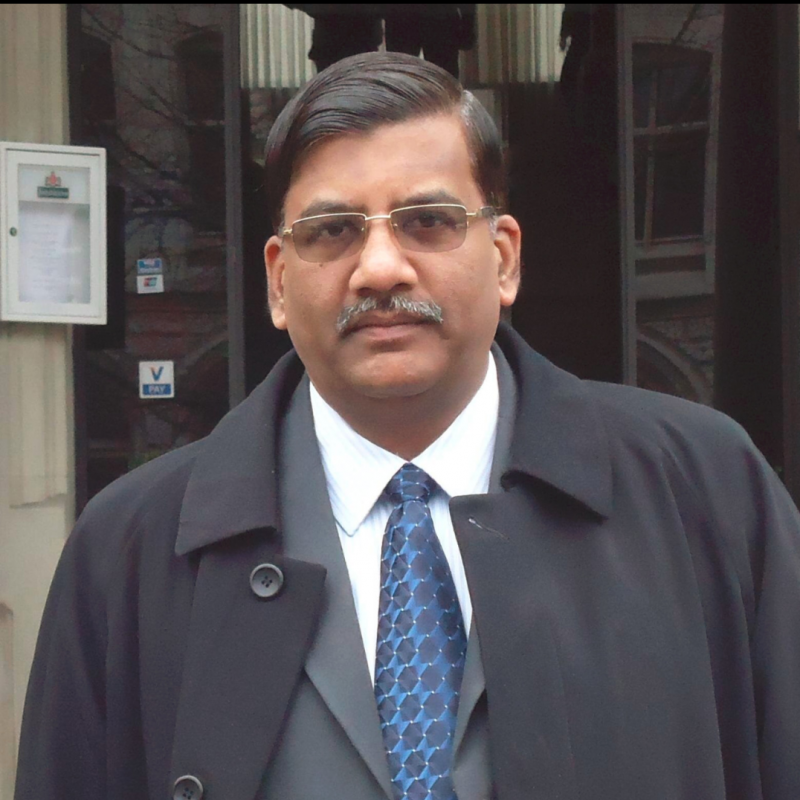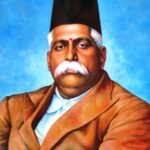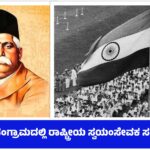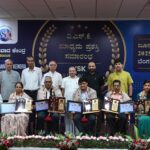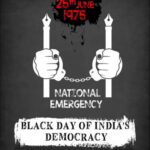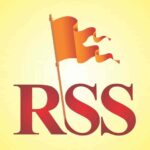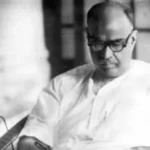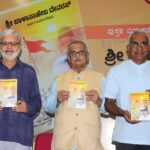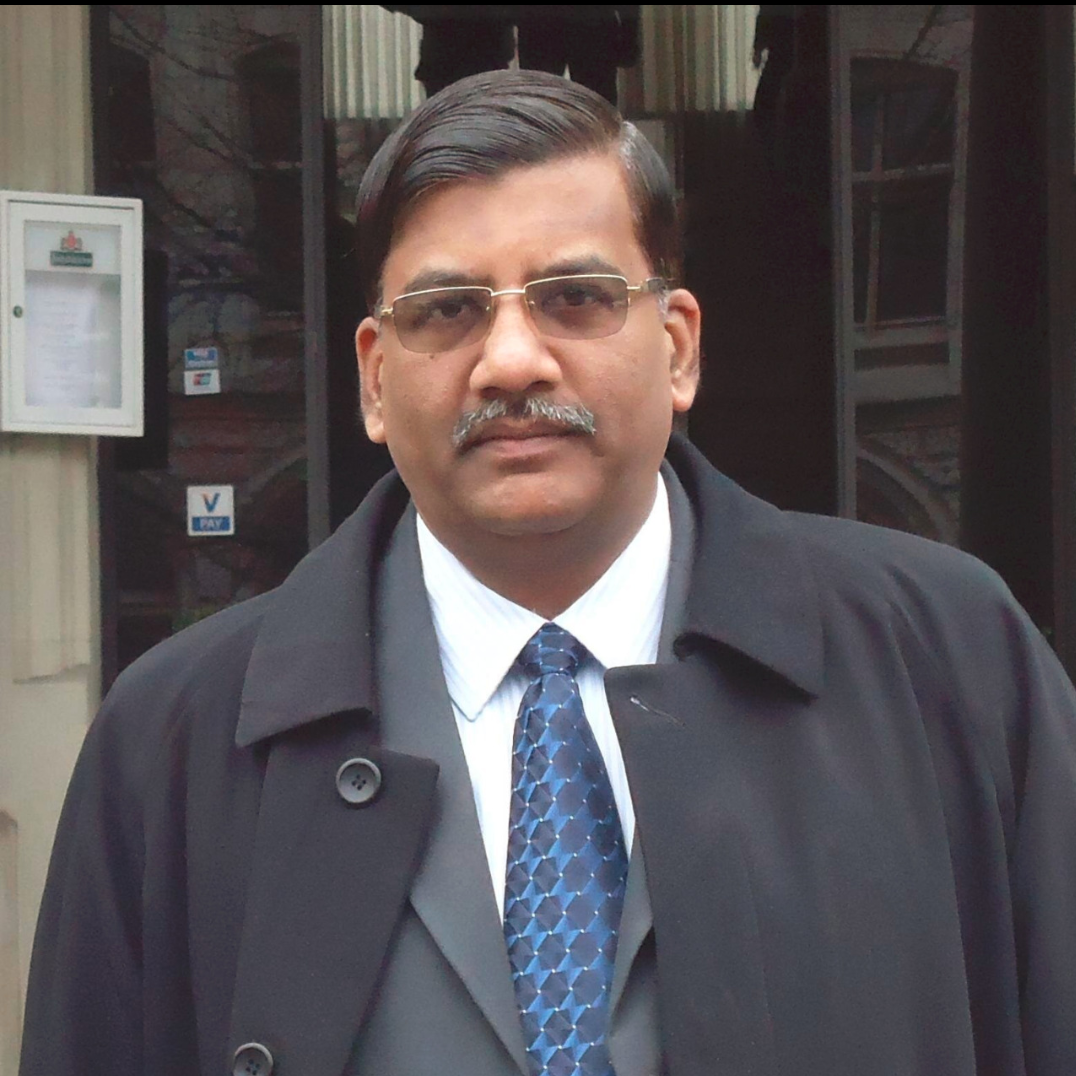
Columnist Sri Prashant Pole
We have got Independence from British on 15th August 1947. Most of us living today are born after independence. And, not so familiar with the history behind the independence. 1st August to 15th August 1947 are significant days in history. After 71 years, it makes sense for us to recollect the history of those days. Sri Prashant Pole will be writing a series to present this history to us. This will be a series of 15 articles. We will be publishing them all for you. Search them under the blog section of samvada.org tagged as Those 15 days
August 1st, 1947
– Prashant Pole
Friday. August 1st, 1947. This day suddenly assumed importance. Two things happened on this day regarding Kashmir, which would prove significant in the future. These two things had hardly any connection between them, but these two developments would be necessary in the Ramayana and Mahabharata that was to be followed.
That Gandhiji reached Srinagar on August 1st was the first among those two. This was Gandhiji’s first visit to Kashmir. Earlier, Maharaja Hari singh of Kashmir had extended personal invitation to Gandhiji to visit Kashmir when the latter had just returned from South Africa and the World War I was going on. The Maharaja was just a 20-year old then. However, everything had changed dramatically in 1947. The Maharaja as well as the administration of Jammu & Kashmir did not want Gandhiji to come this time around. Maharaja Hari Singh himself wrote a Letter to Viceroy Lord Mountbaten in this regard. In it, he said, “After a comprehensive thinking, we want to suggest that Mahatma Gandhi should cancel his planned tour to Kashmir this time around. And if he indeed wants to come, he should come after the end of autumn. We want to tell you again, neither Gandhiji nor any other political leader should come here before the situation in Kashmir improves.”
Thus, it was a situation akin to going to host’s house in spite of his hostility. Gandhiji was aware of this to some extent. Kashmir was now a key issue for both India and Pakistan. Freedom was virtually only two weeks away. And Kashmir had still not make its decision known.
Hence, Gandhiji did not want his Kashmir visit to be seen as his campaign to get ‘Kashmir merged with the Indian Union’. It would have been detrimental to his persona, it appeared to him. Before leaving for Kashmir tour, Gandhiji had said in his prayer meeting at Delhi on July 29th,
“I am not going to tell Maharaja to join India and not the Pakistan. The people of Kashmir are the true owners Kashmir. They should decide as to where they would join. And hence, I am not going to do any public work in Kashmir. Even prayer. Even that would be personal for me…!”
Gandhiji arrived at Srinagar on August 1st via Rawalpindi. Since Maharaj did not invite them this time, he stayed at Kishori Lal Sethi’s house. Even though his house was rented one, it was a spacious one. This house was located very near to the Bone & Joint Hospital of Barzula in today’s Srinagar. This Sethi would procure contracts of the forests. He was close to the Congress, but he was also closer to the National Conference. However, the Maharaja had put the leader of the National Conference Sheikh Abdullah in jail at that time. Many leaders of the National Conference were expelled from Kashmir. They were charged with conspiring against the Maharaja under the leadership of Sheikh Abdullah.
And therefore, when Gandhiji was coming en route to Srinagar via Rawalpindi, NC leaders Bakshi Ghulam Mohammad and Khwaja Ghulam Mohammad Sadiq, saw his off at Kohla bridge and went back to Lahore. Gandhiji had his personal secretary Pyarelal and two nephews with him. After entering Srinagar, Gandhiji went straight to Kishori Lal Sethi ‘s house. He was taken to the Dal Lake after having a brief rest there
*During the entire tour of Gandhiji, NC men accompanied him everywhere.* But why…? Because prior to this first visit to Kashmir, Gandhiji had asked all the information on Kashmir to Nehru. He himself disclosed this during his Kashmir tour. And in Kashmir, Pandit Nehru ‘s closest friend was Sheikh Abdullah, who was imprisoned in jail. Of course, Sheikh’s begum and other followers took care of all the arrangements for Gandhiji in his absence.
The first official government representative to pay visit to Gandhiji in Kashmir was Ramchandra Kak . The Prime Minister of Kashmir who also happened to be a very trusted aide of Maharaja Hari Singh and occupying the top spot in the ‘hate list’ of Nehru. The reason was that on May 15, 1946, when Sheikh Abdullah was arrested and imprisoned for his anti-Kashmir campaign, Nehru announced that he would go to Kashmir to be former’s lawyer. Kak prohibited Nehru from entering Kashmir and arrested him near Muzaffarabad. Nehru, obviously, harboured a great disdain for this act…!
Ramchandra Kak handed over a sealed letter from Maharaja to Gandhiji. This letter was an invitation for a meeting. The meeting was fixed on 3 August at Maharaj’s residence ‘Hari Nivas’.
As per Nehru’s briefing, the NC workers surrounded Gandhiji during his entire Kashmir tour. In Sheikh’s absence, Begum Akbar Jahan and daughter Khalida came to meet him many times during his three-day stay.
*On August 1st , Gandhiji did not met even a single Hindu nationalist leader in Srinagar…!*
——– ——– ——— ——–
An another development was taking place on August 1st because of which there would be discontent in the Indian subcontinent for many years to come. And this incident also related to Kashmir. The state of Kashmir was a large one under the leadership of Maharaja Hari Singh. The British severed Gilgit Agency, a province that fell under it, and added it in the British Empire in 1935. Basically, the entire and undivided Kashmir is a literally a paradise on earth. Moreover, Kashmir held and still holds a critical importance strategically and militarily. The boundaries of three countries touched this state. In 1935, even though World War II was far away, major changes had started taking place in world politics. The might of Russia was increasing and hence the British took away Gilgit Agency, the part of Kashmir that touched Russia from Maharaja Hari Singh.
Later, much water flew through Jhelum. The World War II ended. All the countries that participated in that war were left in shambles. The British had decided to leave India. And in this situation, British had no interest in controlling a remote area like Gilgit Agency (the region of Gilgit-Baltistan). And therefore, even before according independence to India officially, the British handed over the Gilgit Agency province to Maharaja. At the sunrise of August 1st, 1947, the state flag of Kashmir was flying proudly at the place of Union Jack at all district headquarters in Gilgit-Baltistan.
However, how much did the Maharaja consent to this transfer? Not much…!
The British had deployed Gilgit Scouts battalion for the defense of this region. Except for some British officers, the whole army was formed by Muslims. With the transfer of August 1st, this Muslim army also came to Maharaja. The Maharaja appointed Brigadier Ghansara Singh as the Governor of this region. Moreover, he gave Major W. A brown and Captain S. Methison of the Gilgit Scout with him. Subedar Major of Gilgit Scout Babar Khan was also with these officers.
While doing this, Maharaja would not have imagined that whole of Gilgit Scout would turn treacherous within two months and three days and imprison Governor Brig. Ghansara Singh.
This transfer of August 1st paved the way for important events in future…!
——– ——– ——– ——–
Even as the divided freedom of united India was at the threshold, huge massacres were going on at the east and west borders of the country. The British authorities anticipated that this massacre would increase with the advent of Independence Day and of course, the partition day. Therefore, to tone down the severity of these riots, they put forward the concept of the mixed army of Hindus, Muslims and Sikhs. Accordingly, a force named ‘Punjab Boundary Force’ was formed. It had eleven mixed infantries. The total military persons were 50 thousand and four brigadiers led them – Mohammad Ayub Khan, Nasir Ahmed, Digambar Brar and Thimmaiah.
All these four brigadiers started their work of Punjab Boundary Force in their temporary headquarter at Lahore on August 1st .
However, this mixed army was forced to witness their headquarter Lahore burn within 15 days…!
——– ——– ——– ——–
At the same time, a drama was being enacted at far away Calcutta.
A senior leader of Congress and Netaji Subhash Chandra Bose’s elder brother Sharad Chandra Bose resigned from Congress on August 1st. Sharad Babu was a radical personality. This was a man who remained in Congress for forty years and fought with full spirit and might. It is mentioned in the report of British Intelligence in 1930 – “He is a man, who assisted the revolutionary movement for years by means of his Purse, his Press and his Prestige, and who was unquestionably a most dangerous opponent of Government.”
Sharad Chandra Bose and Pandit Jawaharlal Nehru had too many similarities. Both of them were born in 1889. Both of them were educated in England. Both of them acquired their law degree from the England. Both had left-leaning thinking in their younger days. Later on, both became active in Congress. Both shared a good relationship.
However, Congress won majority 54 seats in the provincial elections in the 1937, followed by Krishak Praja Party and Muslim League which got 37 seats each. As a leader of the Bengal Congress, Sharad Chandra Bose exhorted Congress and especially, Gandhi-Nehru to form joint government with the Krishak Praja Party. However, Congress did not relent. The Congress party sat on opposition benches even after winning most seats while Muslim League formed the joint government with the help of Krishak Praja Party. Sher-e-Bengal A. A. Fazlul Haq became the ‘Prime Minister’ of Bengal. From then on, the foundation of the Congress in Bengal became weakened. It eventually led to someone like Surhavardi from Muslim League becoming ‘Prime Minister’ after nine years under whose leadership five thousand Hindus were mercilessly massacred on the ‘Direct Action Day’ in 1946…!
All these events perturbed Sharad Babu. He was writing to Congress leadership, and especially Nehru, in this regard from time to time, but to no avail. Sharad babu was obviously infuriated by the campaign run by Nehru against Subhash Babu during the presidential election for the Tripuri (Jabalpur) Congress in 1939 as well.
And to top all this was the consent given by Gandhi- Nehru to the partition of Bengal. Sharad Babu could not digest this and hence on August 1st, he resigned from his 40 year old Congress party…!
On August 1st, Sharad Babu formed the ‘Socialist Republican Army’ party. He emphasised that “The partition of the country and the situation of anarchy in the country is the failure of Nehru’s leadership”.
——– ——– ——— ——–
August 1st. The day of large scale and rapid developments was about to set. *Punjab was still burning. The horrendous flames of fire from burning houses in Punjab, Sindh, Balochistan were visible from far away in that fearsome darkness of the night. Fifty eight thousand swayamsevaks of RSS were working around the clock to protect the Hindus and Sikhs from being massacred in the whole of Punjab.* The situation in Bengal was heading towards anarchy…
The freedom and partition along with it was just fourteen days away…!
– Prashant Pole
